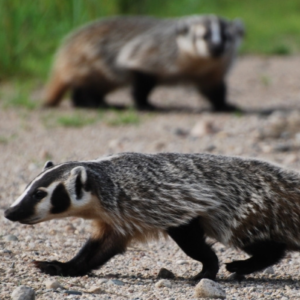
King Rail Nature Canada
Spotting this large, elegant bird can be quite easy. If you find the right place near a freshwater marsh and wait patiently, you might even see a King Rail with chicks. Save endangered species today by joining one of our campaigns! Help End the Extinction
Vital Signs
- Common name: King Rail
- Latin name: Rallus elegans
- Indigenous name(s):
- Conservation Status: Endangered
- Range: Ontario
- Life span: Unknown, but thought to be 2-4 years
- Size: 38-43 cm in height, 320-425 g in weight. Wingspan is 50-52 cm

The King Rail is a thin bird that’s cinnamon in colour. It has white and black on its sides and black streaks on its back. It also has a yellow, slightly curved bill, and long legs.
King Rail Facts
- Largest Species of Rail in North America
- Has a wide variety of calls. One is the sound “kik-kik-kik”, which it might do up to ten times in a row!
- After nesting, the King Rail molts and is flightless for an entire month
- Usually, they catch food in aquatic habitats. But when they hunt on land, King Rails will bring their prey back to water and dunk them in before eating!
- Known to be picky about water levels in their habitat

Threats
The biggest threat to the King Rail is habitat loss through the degradation of wetland habitats. This degradation is mostly caused by runoff of pesticides and chemical fertilizers and erosion.
Invasive plant species cause changes to marshes that make them unsuitable habitat for the King Rail. Introduction of invasive carp changes water quality, which can reduce the amount of prey available for the birds.
King Rails have also been noted to have fatal collisions with vehicles and human-made structures.
What’s Being Done
The King Rail is protected under the Migratory Birds Convention Act, and Ontario’s Endangered Species Act, 2007.

Canada has committed to the goal of protecting 30 percent of lands, ocean, and freshwater in Canada by 2030. This goal will help protect ecosystems, restore habitats, and fight climate change. All these things are a step in protecting Canada’s at-risk animals—so let’s hold the federal government to their promise.
How to Help
- Learn: Stay informed about endangered species by signing up for Nature Canada’s monthly e-newsletter.
- Take Part: Send a letter in support of a Lake Ontario National Marine Conservation Area!
- Find out more: Help us end the extinction by taking action for nature today—visit conservation websites like Nature Canada or join one of our campaigns!
Resources
- All About Birds – King Rail
- COSEWIC – Assessment and Status Report: King Rail
- SARA – King Rail
Want to Help?
Hello nature life wilderness is the world’s envy. It’s our duty to keep our true north strong and green.
Donate

